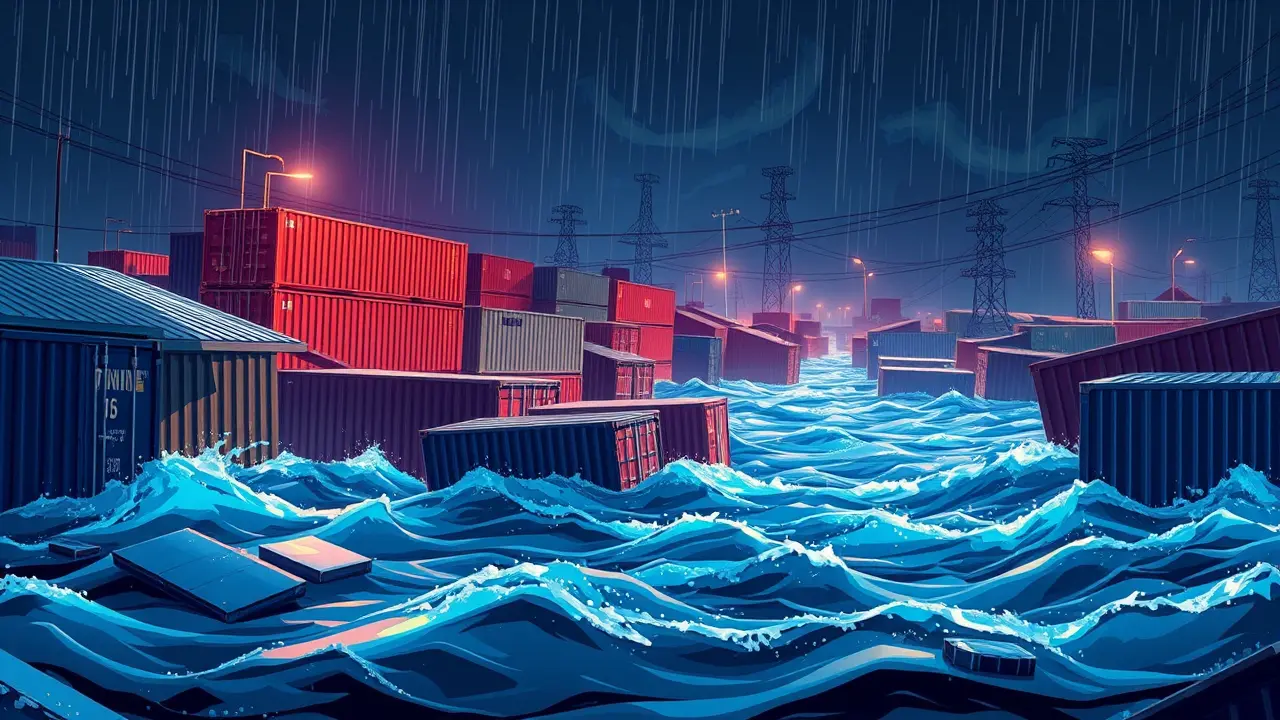
Otheraccidents & disastersTransport Disasters
Deadly Philippines Floods Sweep Away Shipping Containers
EM
Emma Wilson
21 hours ago7 min read4 comments
The floodwaters came not as a gentle rise but as a violent, churning onslaught, swallowing entire communities in the Philippines and transforming streets into raging rivers that claimed at least three lives and sent desperate residents scrambling onto their rooftops, a scene of human vulnerability against nature's raw power. This isn't just another seasonal monsoon; this is a climate-driven catastrophe unfolding in real-time, a stark reminder of the archipelago's acute vulnerability to increasingly frequent and severe weather events.The tragedy was compounded by the surreal and deadly spectacle of shipping containers—those ubiquitous symbols of global trade—being torn from their moorings and swept away like children's toys, becoming massive, uncontrollable projectiles carried by the brown, furious currents. These metal behemoths, which normally sit stacked in orderly rows, represent a critical failure in disaster preparedness for a nation so accustomed to typhoons; their movement poses not only an immediate physical threat to infrastructure, homes, and human life but also a longer-term economic and environmental hazard, potentially containing everything from industrial chemicals to consumer goods, their contents now leaching into the water and soil.The human stories emerging are those of sheer survival—families huddled on corrugated iron roofs, the relentless downpour obscuring their view, their phones dying as they wait for rescue boats that seem agonizingly slow to arrive. Officials confirm the fatalities, but the true scale of the disaster may not be known for days as floodwaters recede to reveal the full extent of the damage.This event must be viewed through the lens of a warming planet, where warmer ocean surfaces fuel more powerful storms and lead to unprecedented rainfall totals, a pattern scientists have long warned about and which now manifests with terrifying regularity across Southeast Asia. The Philippines, a nation of over 7,000 islands, finds itself on the front lines, its geography a curse as much as a blessing, its people repeatedly demonstrating incredible resilience in the face of losses that would cripple other societies.The broader context is one of urban planning strained by rapid population growth, where informal settlements often spring up in the most flood-prone areas, and where logistical hubs storing thousands of containers are placed with commerce, not climate resilience, as the primary concern. The international community watches, but local emergency crews are the true heroes, navigating treacherous waters to pluck people to safety, their efforts a fragile lifeline in a country grappling with a new normal of climatic extremes.The consequences will ripple far beyond the immediate inundation: disrupted supply chains, lost livelihoods, a public health crisis from waterborne diseases, and the profound psychological trauma of losing everything in a matter of hours. This is more than a news flash; it is a urgent, empathetic plea for recognition, for support, and for a global reckoning with the human cost of climate inaction, written from a place of shared humanity and a desperate hope for a more secure future.
#featured
#Philippines
#floods
#shipping containers
#fatalities
#disaster response
#extreme weather
Stay Informed. Act Smarter.
Get weekly highlights, major headlines, and expert insights — then put your knowledge to work in our live prediction markets.
© 2025 Outpoll Service LTD. All rights reserved.